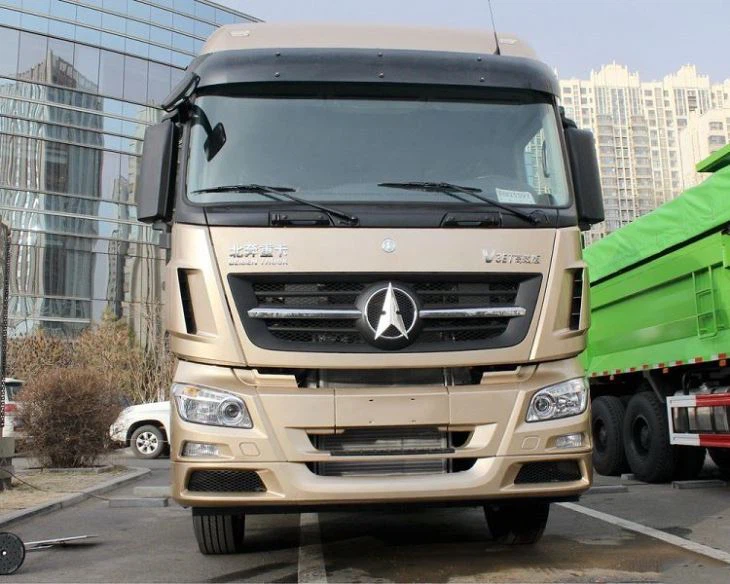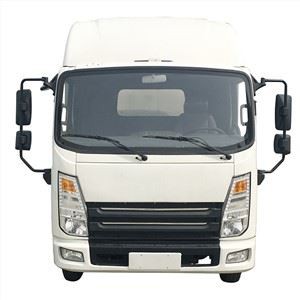Understanding Rear Load Garbage Trucks: The Ultimate Guide

Garbage trucks are an essential part of urban infrastructure, playing a crucial role in waste management systems worldwide. Among various types of garbage trucks, rear load garbage trucks are among the most commonly used for residential and commercial waste collection. This article delves into the intricacies of rear load garbage trucks, examining their design, functionality, cost, environmental impact, and operational tips to maximize efficiency.
What is a Rear Load Garbage Truck?
A rear load garbage truck is a specialized vehicle designed for collecting waste and refuse. Unlike front-load or side-load garbage trucks, which operate differently, rear loaders engage with the refuse from the back. This section will explore the key features that define rear load garbage trucks.
Key Features
- Compaction Mechanism: Rear loaders typically have an internal compaction system that compresses waste to maximize cargo capacity.
- Accessibility: The design allows easy access for workers to load waste bags and bins from the rear.
- Hydraulic Systems: These trucks often use hydraulic lifts to assist in lifting debris and bins for loading.
- Capacity: Most rear load garbage trucks can carry between 10 to 20 cubic yards of waste.
Types of Rear Load Garbage Trucks
There are several types of rear load garbage trucks, each designed for specific waste management tasks. Understanding these types can aid municipalities and businesses in selecting the right vehicle.
Standard Rear Loaders
These trucks are the most common type, designed for household waste collection. They can typically handle various types of refuse, including general waste and recyclables.
Heavy-Duty Rear Loaders
Heavy-duty models are built for more demanding tasks, such as construction waste removal or large-volume commercial pickups. They often feature reinforced bodies and increased compaction capabilities.
Modified Rear Loaders
Some municipalities use modified rear loaders equipped with additional features like split compartments, allowing simultaneous collection of recyclables and waste.
The Advantages of Rear Load Garbage Trucks
Rear load garbage trucks offer several advantages that make them ideal for waste collection in many contexts. This section will discuss why these trucks are often preferred.
Operational Efficiency
The design of rear load garbage trucks allows for efficient loading and unloading, minimizing the time spent at each collection point.
Quick Payload Changes
With a rear-loading mechanism, drivers can face the truck backward, reducing the time needed to switch between pick-up points.

Cost-Effectiveness
Not only is the initial investment lower for rear loaders compared to specialized trucks, but their versatility also enables municipalities to save on operational costs.
Maintenance Costs
Rear loaders generally have lower maintenance costs, given that they have fewer moving parts compared to side loaders and front loaders.
Choosing the Right Rear Load Garbage Truck
When selecting the right rear load garbage truck, organizations should consider several factors. This can greatly influence both efficiency and effectiveness in waste management practices.
Vehicle Size and Capacity
Choosing the correct size is vital, as too-large a vehicle can lead to higher operational costs, while too-small may result in increased trips, raising costs further.
Fuel Efficiency
Investigating the fuel economy of different models can directly impact running costs over a truck’s lifespan.
Regulatory Compliance
It is essential to ensure that any garbage truck selected complies with local regulations regarding emissions and vehicle specifications.
Operational Tips for Using Rear Load Garbage Trucks
Efficient operation of rear load garbage trucks can improve waste collection and reduce costs. Here are some practical tips.
Driver Training
Investing in proper driver training focusing on safe driving and efficient loading techniques can greatly influence operational success.
Loading Techniques
Drivers should be trained in effective loading techniques, such as compacting waste correctly to maximize truck capacity.
Regular Maintenance
A regular maintenance schedule helps in identifying potential issues before they escalate, ensuring the trucks are in good working condition.
Route Optimization
Using GPS technology can aid in route planning, helping to save both time and fuel during collection runs.
Environmental Impact of Rear Load Garbage Trucks
The environmental implications of waste management practices are significant, and rear load garbage trucks can influence sustainability positively. This section explores the ecological footprint of these vehicles.
Reducing Emissions
Modern rear load garbage trucks are increasingly being manufactured with environmentally friendly technologies that minimize emissions.
Recycling Efforts
By having separate compartments for waste and recyclables, rear loaders can enhance recycling efforts within communities.
Community Awareness

Effective waste management increases community awareness about sustainability practices, driving residents to recycle and reduce waste actively.
Cost Analysis of Rear Load Garbage Trucks
Understanding the total cost of ownership for rear load garbage trucks is critical for municipalities and organizations. This section provides an overview of both initial and ongoing costs.
Initial Purchase Cost
| Truck Model | Estimated Cost |
|---|---|
| Standard Rear Loader | $250,000 |
| Heavy-Duty Rear Loader | $300,000 |
| Modified Rear Loader | $275,000 |
Ongoing Operational Costs
- Fuel: Average fuel consumption can vary from 6 to 8 miles per gallon.
- Maintenance: Estimated annual maintenance costs are around $15,000.
- Insurance: Depending on coverage, insurance costs can range from $800 to $1,500 monthly.
Common Misconceptions about Rear Load Garbage Trucks
Understanding common misconceptions regarding rear load garbage trucks is essential for better waste management practices. Here, we dispel a few prevalent myths.
Myth 1: They Are Only Suitable for Residential Use

While rear loaders are popularly used for residential waste collection, they are also efficient for commercial and industrial applications.
Myth 2: They Are Inefficient Compared to Other Trucks
Many believe that rear loaders are less efficient; however, their loading systems and operational speed can equal, if not surpass, that of side or front loaders.
Frequently Asked Questions (FAQ)
1. What are the average costs associated with a rear load garbage truck?
The initial purchase cost for a rear load garbage truck typically ranges from $250,000 to $300,000, while annual operational costs can average around $15,000 for maintenance.
2. How does the compaction system work in rear load garbage trucks?
The compaction system uses hydraulic technology to compress the waste, maximizing load capacity and minimizing the frequency of emptying the truck.
3. Can rear load garbage trucks collect recyclables?
Yes, many rear load garbage trucks can be equipped with separate compartments for recyclables, enabling efficient waste and recycling collection simultaneously.
4. What training do drivers need for operating rear load garbage trucks?
Drivers should undergo training focused on safe operation practices, effective waste loading techniques, and efficient route planning to optimize collections.
5. How long do rear load garbage trucks typically last?
With proper maintenance, rear load garbage trucks can last between 10 to 15 years, depending on usage and operational conditions.
6. Are rear load garbage trucks environmentally friendly?
Modern rear load garbage trucks are increasingly designed with eco-friendly technologies to reduce emissions and support recycling initiatives, thereby having a positive environmental impact.
